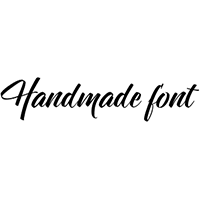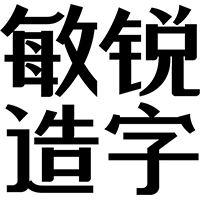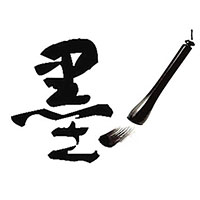Figuring Out Numerals – The Sequel

Faster than a Hollywood blockbuster, here's the sequel already. ; ) In this addendum, we look at some special cases in the wondrous world of numbers. Because I didn't want people who already read Figuring Out Numerals to miss out on this information, and also because I don't like tinkering too much in an already published post, I am compiling these additional tidbits on figures in this separate post. Please keep in mind this post is meant to provide useful basic information; I won't go too much into (historical) details.
Three-quarter Figures

Examples of three-quarter figures in vintage (top) and contemporary (bottom) type designs.
Typefaces:Berlin Sans / FF Berlinsans (top) and Lexia (bottom)
Sometimes designers feel that oldstyle figures stylistically don't fit with specific type models, like certain sans serifs. To prevent the lining figures from standing out too much in the surrounding text they use an in-between type of numerals – three-quarter figures. These are taller than the x-height but not as tall as the cap height. Three-quarter figures can either be the default lining figures – with no full-height lining figures available – or replace the oldstyle figures. In the latter case activating oldstyle figures will produce three-quarter figures.
If no true full-height lining figures are included in the character set three-quarter figures will produce "local depressions" in all caps setting.
Hybrid Figures
Up till now we have approached the aspect of numerals in typography from a designer's point of view. Yet thanks to the home computer a whole new category of users has been exposed to and made aware of typefaces for the past two decades or so. For the sake of simplicity they are commonly called office users. Their primary concern is not aesthetics but efficient business-like communication. Whereas graphic designers and typographers obsess over minute typographic details, office users understandably just want fonts that work, period. This doesn't mean they are insensitive to typography. Office users often actively select specific fonts; they know what they like and occasionally seek out new typefaces, and many have a fairly good grasp on the basics of typesetting. However most of them don't really care for umpteen styles and weights, small caps, extended ligature sets and alternates and whatnot, and certainly not six or more figure sets.

Hybrid figures are halfway between oldstyle and lining figures – three-quarter figures that have slight ascenders and descenders.
Typeface:TheSans; the hybrid numerals can be found in TheSans Office, and as tabular oldstyle figures in the OpenType version (available offline from FontShop).
Historically there exists a special kind of three-quarter figures shaped to look as good as possible in mixed case and in all caps setting. As their name implies hybrid figures are an in-between style that incorporates characteristics from both their oldstyle and lining cousins. They rest on the baseline, and their height is roughly three-quarter of the cap height. They are almost lining with ascenders and descenders that extend slightly. Because of their specific qualities some type designers and foundries choose to incorporate them in typefaces that are either designed with office use in mind, or in special office versions of their type families. Because of their convenience they are also sometimes included in news faces. Again they can either be the default figure style or replace the (tabular) oldstyle figures.
Dotted / Slashed Zero
An even more specialised group of type users are people who write code. Code is typically set monospaced. In many faces the uppercase "O" and the lining zero are distinguishable from each other by their width amongst others. If however they are designed to a fixed width it is difficult to make them different enough. The peculiar syntax of code often provides insufficient context to unambiguously determine which is which. This also applies by extension to any situation where capitals and lining figures are arbitrarily mixed.

Comparing (from left to right) the capital O, and the lowercase o with and without stroke (left), with the oldstyle dotted and slashed zero, and the lining dotted zero (right) in FF Nuvo Mono.
When the distinction between the uppercase "O" and the lining zero is crucial fonts offer a dotted and / or a slashed zero – the latter not to be confused with the Latin capital letter O with stroke (Ø) used in Norwegian and Danish. In very rare cases an oldstyle dotted and / or slashed zero guarantees that the numeral can't be mistaken with the lowercase "o".
Monoline Oldstyle Zero / Zero with Rotated Stress

Monoline oldstyle figure zero (top) and zero with rotated stress (bottom).
Typefaces:FF Clifford (Eighteen) (top) and FF Spinoza (bottom)
The distinction between the lowercase "o" and the oldstyle zero is a much older concern. I can't really go into historical details because this would take us beyond the scope of this post, but early type cutters designed typefaces with a perfectly circular, monoline zero. Another solution was to rotate the axis and have the thick parts of the zero at the top and bottom. These two particular zero shapes can mostly be found in revivals of classic faces, yet some modern serif typefaces also use them.
Raised Figure Three / Five

Example of a Didone typeface with raised figure three and five.
Typeface:FF Acanthus
Another quirk found in certain typefaces – more specifically Didones – are the oldstyle numerals three and / or five designed with their tail resting on the baseline instead of hanging below it. It looks rather unusual to us now, but during the heydays of Romantic faces in the late 18th, early 19th century the raised three and / or five was common.
Weight Duplexing

Switching weights in a typeface where weight duplexing is applied to the figures ensures they line up in vertical columns.
Typeface:FF Sero
Sometimes specific numbers need to be noticed in tabular material. However switching to a bolder weight in a non-monospaced type family can produce wider numbers, even when tabular figures are selected. This prevents them from lining up in vertical columns. With this problem in mind certain type designers and foundries produce typefaces that apply weight duplexing in their figures. Switching weights does not influence the alignment in vertical columns in any way – although the weight of the strokes making up the figures grows bolder, their set width remains the same.
This is everything about figures I could think of, apart from Roman numerals and figures in other scripts like Arabic. Is any aspect still missing? Let me know and I will consider adding it.
Header image:Wood type figures at the Hamilton Wood Type & Printing Museum. Photo by Nick Sherman

































 闽公网安备35010202000240号
闽公网安备35010202000240号